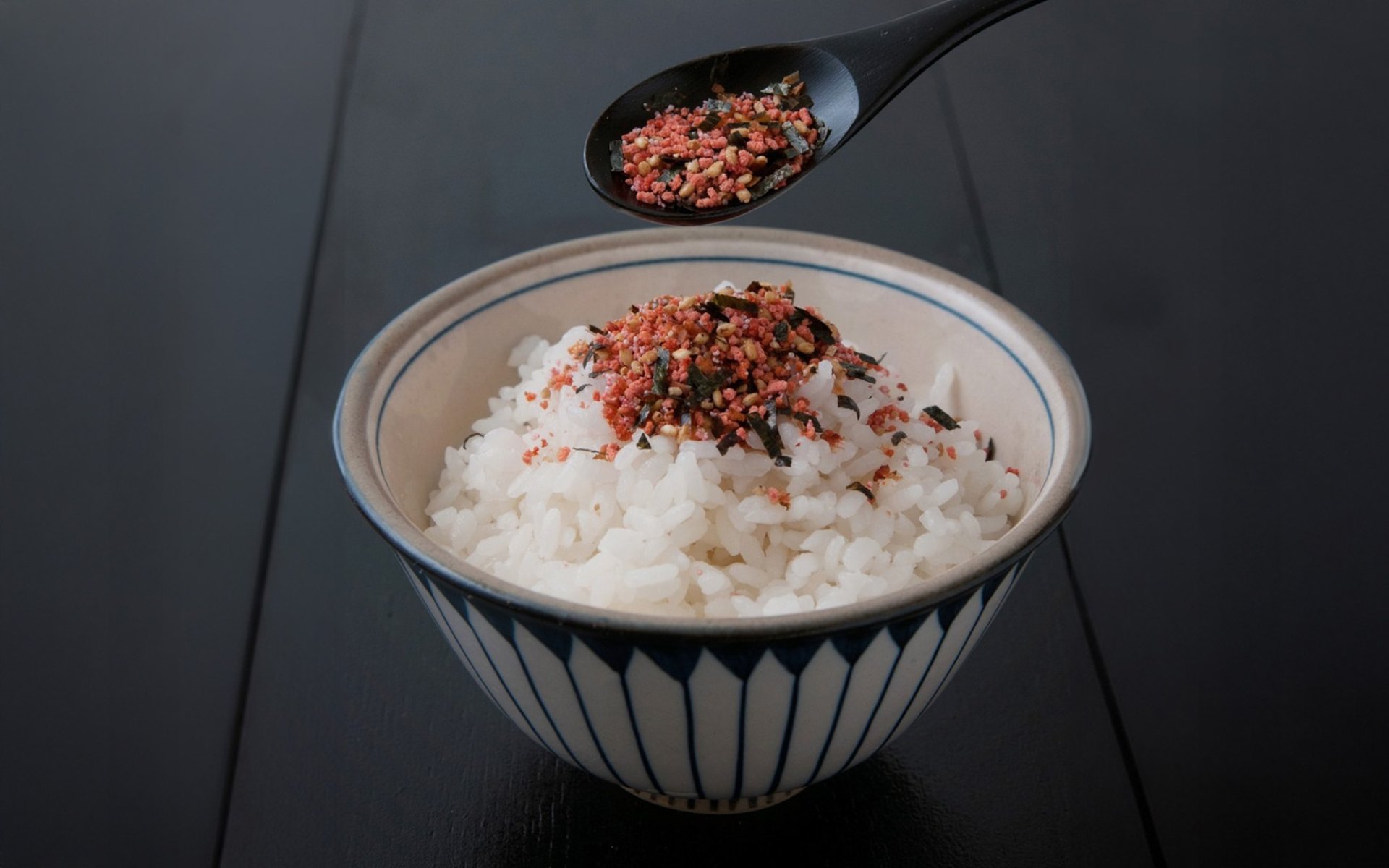Furikake

Rice seasoning or Furikake (ふりかけ) is a condiment that Japanese households often keep in their kitchens. This type of seasoning is easy to use: simply sprinkle it over hot steamed rice or your favorite dishes to enhance flavor and elevate the meal to the next level.
Origin from Nutritional Deficiency in the Taisho Era
For a long time, Furikake has been celebrated as a nutritious food in Japan. Its invention dates back to the Taisho Era (1912-1926). During this period, a large portion of the Japanese population suffered from calcium and nutrient deficiencies. Mr. Suekichi Yoshimaru, a pharmacist living in Kumamoto City, conceived the idea of grinding dried fish bones and recommending that Japanese people consume them with rice to serve as a calcium supplement.
However, the taste of ground fish bones was not particularly appealing to children. Later, he incorporated dried nori seaweed and roasted sesame seeds, grinding them into a blend. This resulted in a ready-to-use rice seasoning sold in glass bottles, named Gohan no Tomo (ご飯の友), which translates to A Friend for Rice.
Popularity and Flavor Evolution
Over time, his rice seasoning became immensely popular. His success inspired Seiichiro Kai, a convenience store owner from Fukushima Prefecture, to experiment with creating his own version of rice seasoning. He used kombu seaweed and dried white croaker fish, simmered in soy sauce, then dried and ground them into a seasoning powder. He marketed it under the brand name Kore Wa Umai (これは旨い), meaning This is Delicious.
Soon after, Seiichiro Kai's Furikake also gained widespread popularity, even expanding into Tokyo, the capital of Japan. This marked the beginning of his creation of new Furikake flavors, notably Noritama, a blend of egg and seaweed. This flavor became extremely popular among children and remains a favorite to this day.
Official Recognition and Global Flavor Diversity
Later, in 1959, this type of rice seasoning was officially named Furikake (ふりかけ) by the National Furikake Association. In addition to formally naming the category of rice seasoning, they also recognized Suekichi Yoshimaru as its inventor in his honor.
Over the years, Furikake has transcended borders and spread to various countries worldwide, evolving to cater to diverse tastes and culinary preferences. While classic flavors remain popular, numerous new options have emerged, such as Korean-style bulgogi sauce flavor, Korean kimchi flavor, wasabi flavor, shrimp and anchovy flavor, fish roe flavor, salmon flavor, and many more.
This wide array of flavors not only reflects the creativity of the producers but also the changing tastes of consumers. Furikake is more than just a condiment; it is an expression of Japanese culinary innovation and a window into the ever-evolving tastes of people around the globe.
Culinary Applications and Nutritional Benefits
While Furikake is most commonly associated with rice, its applications are diverse. In modern Japanese cuisine, people often enjoy it with noodles, salads, sprinkled over Japanese rice balls (Onigiri), or simply with any preferred dish. For children's meals, many parents commonly sprinkle it over porridge, congee, or steamed rice to encourage appetite, as Furikake is rich in various nutritional values, including calcium, protein, and various vitamins, making it a condiment that is both delicious and beneficial.


